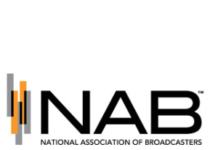
As the digital age accelerates competition for consumer attention, AM/FM radio remains a significant player in the advertising landscape according to new research published in The Ad Bargain, a comprehensive media study by Signal Hill Insights and Sounds Profitable.
Surveying over 2,000 Americans aged 18 and older in February, the study aimed to assess their receptiveness, attentiveness, and attitudes towards advertising across various platforms, providing a weighted reflection of the general population’s views.
Among the platforms in focus, traditional radio finished in the top three most utilized free media. AM/FM placed behind YouTube and social media platforms, excluding Instagram and TikTok. According to the study, 54% of respondents reported listening to the radio in the past week, highlighting its enduring relevance in daily routines.
However, regarding the pertinence of ads encountered, radio ads were perceived as the least relevant to listeners compared to any other mass media. Instagram, TikTok, and podcasts were considered the platforms with the most relevant ads for users – showing the power of algorithms and targeted programmatic buys to cater ads specifically to audience interests.
With changing rules about geo-targeted broadcasts and rising AI audio production capabilities, there may soon be a way for radio to tap into similar relevancy channels for brands.
Despite this, radio’s strength lies in its ability to retain listener attention to advertisements. The survey reveals that 23% of radio listeners listen to all ads they encounter on the medium, a figure only surpassed by podcasts, which boast a 28% full ad listening rate. This is a notable achievement, especially when considering YouTube’s position at the bottom of the scale, where the “Skip Ads” button often dilutes ad attentiveness.
Building on insights from last year’s The Medium Moves The Message survey by Sounds Profitable, radio demonstrated a formidable capacity to enhance brand awareness. It tied with podcasts for an Average Awareness Increase, with both mediums achieving a 7% lift for the Top Five Brands Per Medium, outperforming television’s 4%.
As more radio companies focus on podcasting efforts, 71% of podcast listeners demonstrated a willingness to engage further with brands advertised on podcasts, making it the most engaging medium among those surveyed. Additionally, podcast ads were found to be less bothersome, with 63% of respondents indicating that sponsorship messages on their favorite podcasts were less annoying compared to other advertising formats.
As the media landscape continues to evolve, these findings from The Ad Bargain underscore AM/FM radio’s resilience and effectiveness in capturing listener attention and driving brand awareness in an increasingly competitive marketplace, while showing the need to find better ways to connect client messages to the audience.










Did anyone look into “The Ad Bargain”? It’s a pro-podcast project designed to-promote podcasts. All well and good for podcasters. We know the problems with AM/FM radio and yet the people in the front office aren’t listening are they? There are a few enterprising broadcasters looking to do it better – but those are few and far between. Until that changes we continue to chase our tails, and then get stuck with lopsided studies like this. (My lopsided opinion, by the way.)
I have 2 comments to help both radio and advertisers. First, change up the clocks some how and don’t put your listeners through such long stop sets. Get creative run shorter stop sets but more of them. Secondly and speaking of creative. Make it better. Radio ads are getting worse not better. The poor writers have no resources anymore and their colleague(s) was laid off. With Futuri’s new ‘Spot On’ initiative stations and advertisers can have a more professional sounding ad which would not lead to as much tune out. Listeners win with shorter stop sets featuring better ads. Advertisers win because their ad sounds better and gets heard. Oh yea I almost forgot radio wins too. Win, win, win.
Good points John. Very short stop steps. Something very basic that premier operators did for decades. Until the greed began with Mel Karmizin and CBS, when they made the breaks in Howard Stern’s show absurdity long! Like 30 commercial units in a row. Then many of the other radio operators followed like sheep. They got away with it, because they could. Because demand exceeded supply. There was always another client to step up, to fill up the inventory.
Now, not so much. And these operators are now hooked on the “dope” of revenue from bloated commercial breaks, and can’t get away from it.
This study can be looked at as good or bad, like many studies, depending upon how you use the results.
One point though that is eye-catching is that only 23% of all listeners listen to all radio ads. And saying that number is superior to all platforms, doesn’t make it better. That means that a random radio advertisement is not heard by up to 77% of the audience.
No doubt, this huge miss is in fact caused by the ridiculous commercial cluster breaks of 12,14, 16 or more commercial units in a row. That is the radio equivalent of “junk mail.” Yes, You Tube has a skip button. And yes, this study is showing that up to 77% of the radio audience is also using a “skip button” – a button on their radio
or device- to tune away from the commercial (s).
However, no one cares. The huge corps like iHeart and Audacy and Beasley will never cut their commercial loads– they need the money for debt servicing and executive compensation. And despite stated verbal intentions, advertiser results are not on their radio.
Studies will not change radio. The only thing that could change it,
Is owners with very low debts, flush with capital, who are committed to seriously investing in strong local personalities, to investing in serious promotion, who pay their employees well, and stop these nonsensical cluster breaks and get back to short 2 minute breaks.
Good luck finding that!
I make a point to buy products from sponsors of radio and television programming I enjoy. I also remind my adult daughters to do the same.
I never shopped at Walmart until it started sponsoring programs I enjoy.
Then, Old Spice started its recent campaign showing SAME RACE HETEROSEXUAL couples competing for using the male partner’s Old Spice products. I love these commercials and am happy they run during programming I enjoy. So, off to Walmart I went just to buy some Old Spice.
Radio sponsors seem to be more narrow in their reach. Perhaps radio needs to pursue sponsors whose products appeal to a larger audience than the audiences reguarly listening to the particular program based on Nielsen data. ie Sports programming should adjust and play commercials appealing to moms and dads of toddlers.
By the way I do not buy from sponsors of podcasts – as yet.
Anyway, most iisteners and viewers do not see the connections between the programming they regularly enjoy= the commercials shown = the need for viewers and listeners to actually buy products from those commercials.
Americans are not the smartest people.
“Americans are not the smartest people ”
Well we prove that every November.
54% reported to listening to radio in the past week? What happened to the 90% we’ve been telling clients and advertisers for years.
Two words, Terry…”Standard Error.” (-;
I guess someone should look into Nielsen’s current weighting algorithm.